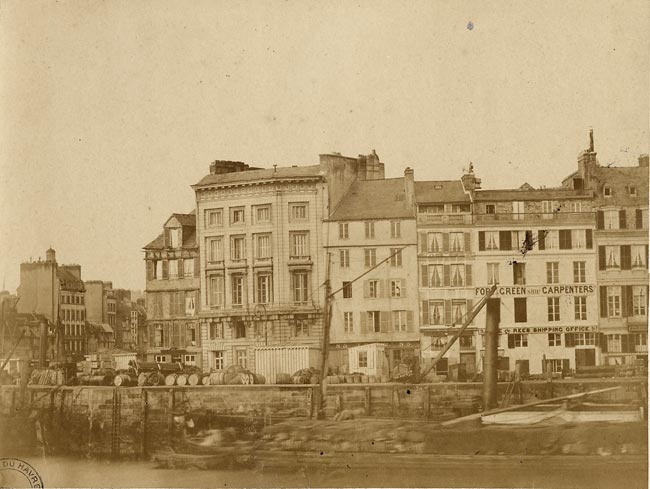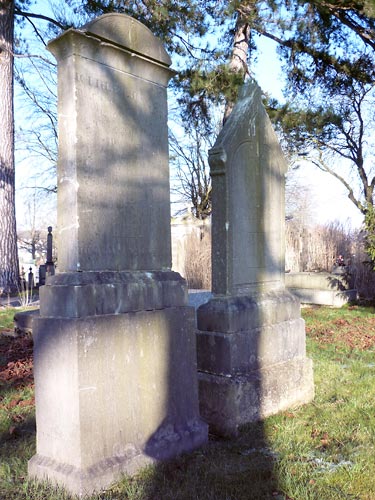Biographical note of
Jean Michel Charles Fort (1789-1864)
Jean Michel Charles Fort was born on April 8, 1789 in Dunkirk, to a mother born in Ardres, near Calais, and to a carpenter father from Born-des-Champs, in Dordogne. He was the oldest of four children.
At the age of 8, he found himself fatherless. His mother quickly remarried with – once again – a carpenter from Dordogne.
As a teenager, the young Jean Michel Charles followed the path of his father and his stepfather, and he himself became a carpenter. It was during his time under the Napoleonic flags, in the arsenal of Dunkirk, that he entered the profession.
In 1811, he married Marie Louise Charlotte Crendal in Calais, where he worked as a ship caulker. The newlyweds moved to rue de la Douane [de la Victoire]. Unfortunately, the relative prosperity of the Calais shipbuilding industry only lasted a while under the Empire, and declined under the Restoration.
At the turn of 1820 and 1821, the couple and their three children moved to Le Havre where an economic revival began as well as the expansion plan for the city and its port. The Fort family then settled near the citadel, a rapidly changing area with often precarious housing.
In 1828, Jean Michel Charles became a master ship carpenter. Without leaving his adopted neighborhood, he had a new house built, larger and more convenient. It adjoined his shipyard, which was conveniently located a stone’s throw from the Le Havre careening grid. With its unusual gable facade overlooking the outer harbor, the Fort house became one of the most remarkable in this new quarter, known as the Germain district.
J.M.C Fort’s specialty was the construction of small boats. At a time when there was a revival of the whaling industry in France, and more particularly in Le Havre, the hunting canoes that he built were the only ones capable of competing with the American hunting boats.1See Le Navigateur, Volume 1, ed. Bureau du journal, Havre, 1829, pp.284-285. In this book, the carpenter mentioned is called Lefort, but he’s actually Jean Michel Charles Fort. We find this same variation of surname – of a kind still frequent at the time – in the trade almanac of 1836. The reputation of our man was well established.
It should be remembered that at this time, whaling was still under American supervision and the whaling crews attached to the port of Le Havre were all Franco-American. This is probably one of the reasons why J.M.C Fort also used the English language for his workshop’s sign.
In 1836, his eldest daughter married the second son of Pierre François Amand Haumont, famous sculptor in ornaments and figures of ships, and neighbor of Fort on quai du Gril.
Two years later, Jean Michel Charles Fort’s wife died at the age of 48. She gave him seven children, including three sons, all of whom would become ship carpenters.2A few years before the death of Marie Louise Charlotte Crendal, one of her brothers had joined her in Le Havre where he also founded a dynasty of ship carpenters.
In 1845, when the eldest son, Jean François Victor turned 30, the Fort company was established under the company name “father & son”.
The Fort family lived at 2 quai du Gril until 1848, when the demolition of a large part of their neighborhood was announced. The Germain district must in fact give way to a military reduit. As a result, the family moved to quai de l’Ile, located just opposite, in the Saint-François quarter. The notability of J.M.C. cannot be denied, since in that same year he participated in the first administration of the Comptoir National d’Escompte of Le Havre.
In 1851, it seems that our former canoe builder had already retired ; the census registry lists him as an annuitant. He then lived in his apartment at 7 quai de l’Ile, in the company of a servant. Despite the premature death of his eldest son which occurred at the same time, Jean Michel Charles could always keep an eye on the succession since his two other sons, Victor and Félix, remained and exercised their profession of ship carpenter on this same quay of the Saint-François district.
On February 24, 1864, J.M.C. Fort died at his home, he was 74 years old.

It’s in the narrowest house (n°7 quai de l’Ile) that J.M.C. Fort finished his laborious existence. When he was forced to leave the quai du Gril at the very end of the 1840s, he took over with his sons most of this other quay, situated just in front of where he used to live. Note that at n°9, the sign FORT & GREEN SHIP CARPENTERS, was managed by Victor Fort (the son) with an associate by the name of John Green.
After a funeral ceremony in the Saint-François church in Le Havre, he was buried next to his wife in the Sainte-Marie cemetery. It is there, among the local notabilities of his time, that he still rests today.

Let us add that according to Le Havre journalist and chronicler Charles Vesque (1830-1899), Jean Michel Charles Fort was a man of industry and an excellent worker, with a good heart, and [who] made only friends among his fellow citizens. Vesque also qualifies him as a cheerful hero of our carnival celebrations.3Charles Vesque, Histoire des rues du Havre: origines, faits historiques, légendes, anecdotes, biographies, etc. 2e partie, Havre, Imp. J. Brenier & Cie, 1876, pp.449-450. The “père Fort”, as he was commonly called, acquired a certain popularity in his adopted city where he organized memorable cavalcades. It seems, moreover, that his reputation as a good jovial fellow continued after his death, since in 1907 again, a local chronicler, Albert Herrenschmidt (1866-1929), recalled that the sole idea of a cavalcade and a disguise brought him joy.4Albert Herrenschmidt, Le Havre qui passe, chroniques havraises, Imp. du Journal Le Havre, 1908, p.54.Finally, in the same vein, the Le Havre writer Robert de la Villehervé (1849-1919) wrote about him in 1905: there was above all père Fort, the ship carpenter, with whose deeds we could fill a whole book, who was joy itself, the marvelous, inexhaustible ironist, able to take advantage of the slightest incident to laugh at it and make people laugh and which, if there was justice, would deserve to be portrayed in twenty chronicles.5Robert de la Villehervé, Mi-Carême ; les vieilles gloires des Carnavals havrais, article published in Le Havre-Eclair 30 March 1905.
May this simple notice pay him tribute in retrospect.

